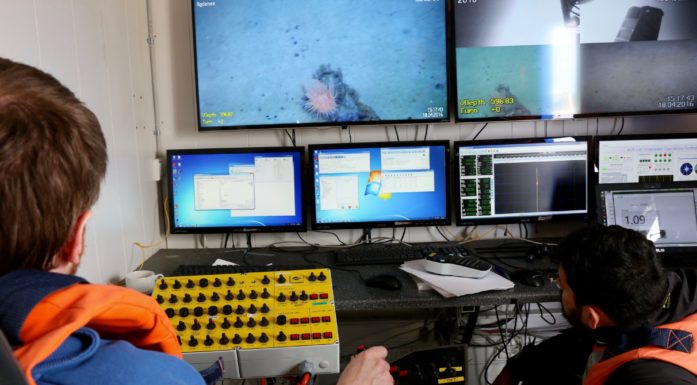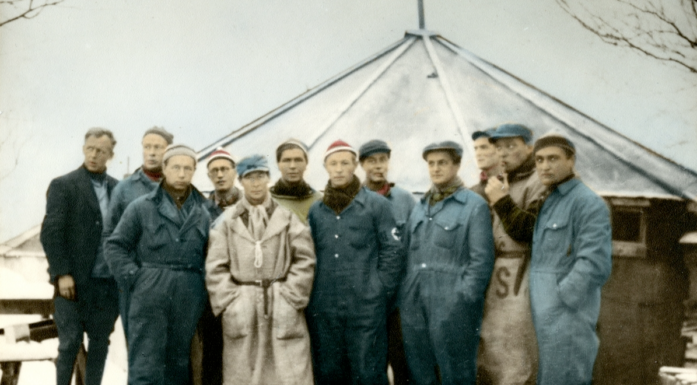When trees talk
We think of trees as silent sentinels, watching as the world goes by and the ages pass. But what if you could interview them about what they have seen?
It’s the summer of 2008, and the phone rings at NTNU’s National Laboratory for Age Determination. It’s a farmer from the mountains of central Norway who has something he thinks the scientists at the lab will be interested in.
It isn’t that often that the scientists get calls like this.
More often than not, people are calling to see if the lab can date the timbers from old summer farms or wooden bits from family heirlooms, like bridal chests, that have been handed down over the generations.
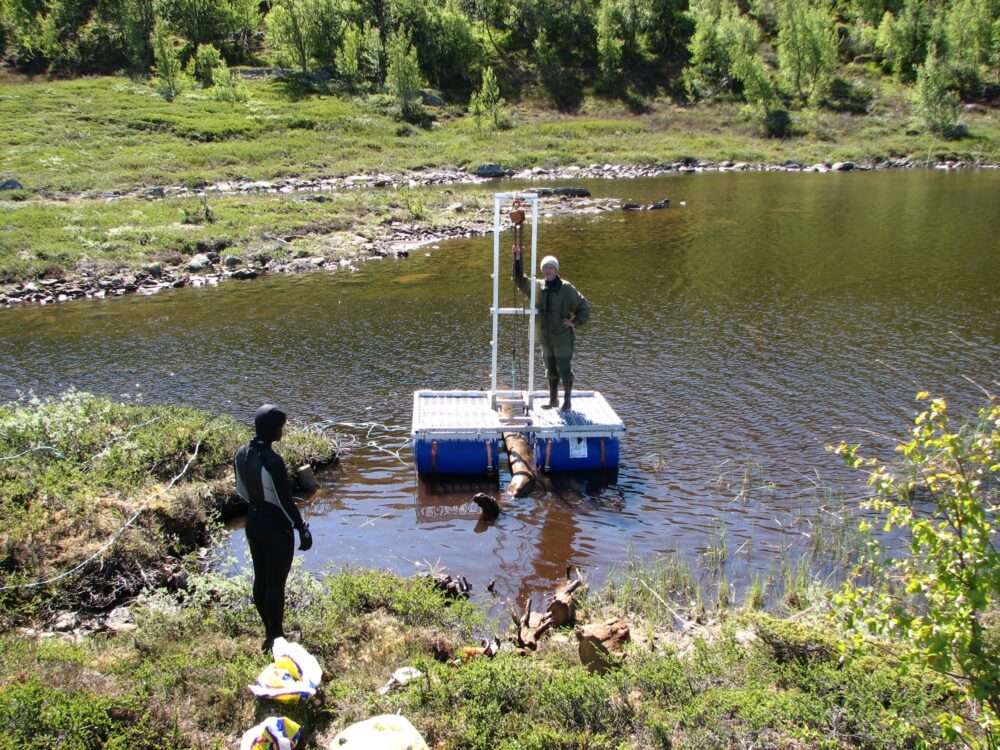
Aage Paus, now an emeritus professor from the University of Bergen, stands on a kind of raft that can be used to extract downed logs and other samples from the bottom of a lake. Helene Svarva, left, now an associate professor at NTNU, looks on. Photo: Terje Thun/NTNU
But what the farmer says next makes them pack their bags and drive the five hours to his village.
Trees offer a kind of crystal ball on our future climate, even as they record the past.
He told the researchers he had a lake at 1100 meters in Bøverdalen, and he wanted to know how old the trees were. The little lake was on the farmer’s property, and the trees were actually submerged in the water. And there were at least thirty of them.
“Of course we had to go there,” said Helene Svarva, an associate professor at NTNU who works with dendrochronology, or tree ring dating.
- You might also like: A tiny arctic shrub reveals secrets of plant growth on Svalbard
In search of old trees
That’s how Helene Svarva came to find herself on the shores of Øvre Teppingstjønne, a tiny alpine lake at about 1000 metres above sea level. That’s well above the tree line for Scots pines, the trees most commonly used for dendrochronological dating in this part of the planet.
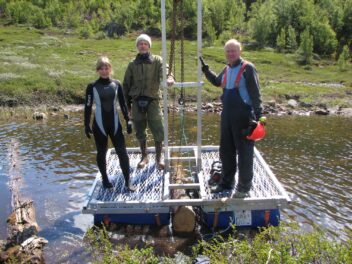
Helene Svarva, left, in wetsuit, with Aage Paus, from the University of Bergen and Terje Thun, then a professor at NTNU, on the raft in Øvre Teppingstjønne. Photo: Private
Researchers like Svarva use tree-ring dating — or more technically, dendrochronology — to uncover secrets of the past. It’s a surprisingly simple technology that has become increasingly important for climate researchers across the globe.
In their careful records of climate change over the centuries — and millennia — trees offer a kind of crystal ball on our future climate, even as they record the past.
Climate researchers can use these windows on the past to test the climate models they have created to predict how greenhouse gas emissions will affect future climate.
Trees grew higher up in the past
“Six-to-eight thousand years ago, it was a lot warmer in Norway and in Scandinavia,” Svarva said on the latest episode of 63 Degrees North, NTNU’s English language podcast.
When it was that much warmer, she said, the alpine tree line was much higher up than today. Some of these trees would have grown on the edges of small tarns, like the farmer’s little lake.
And over the millennia, these trees would die, and at least some of them would topple over into the lake, where they would be preserved in the cold water.
For researchers like Svarva, finding high-mountain lakes like these is a potential gold mine of information, locked up in the preserved trees.
“So when you find that, you know, that this is probably old, then you can sample it and try to make a chronology if you have many trees,” she said on the podcast.
That’s one of the reasons Svarva was so willing to immerse herself in the murky waters of that high mountain lake.
What the trees can tell us
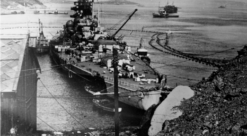
The German battleship the Tirpitz was stationed in Kåfjord, in northern Norway, towards the end of WWII. The Germans used an unusual approach to hide the vessel in plain sight from Allied bombers. Photo: Digital Museum, Marinemuseet, Forsvaretsmuseer
But it’s not just information about climate that’s locked away in the tree’s rings.
Tree rings have helped researchers figure out what REALLY happened in Norway during the Black Death.
They tell a surprising story about how Nazi occupiers in northern Norway hid their massive battleship, the Tirpitz, from Allied bombers.
And a new project, just begun, may help us better understand a critical aspect of future climate change — how precipitation will change as the planet warms.
To learn more, listen to 63 Degrees North.
References:
Ljungqvist, Fredrik Charpentier; Seim, Andrea; Tegel, Willy; Krusic, Paul J.; Baittinger, Claudia; Belingard, Christelle. (2022) Regional Patterns of Late Medieval and Early Modern European Building Activity Revealed by Felling Dates. Frontiers in Ecology and Evolution
Thun, Terje; Svarva, Helene Løvstrand. (2018) Tree-ring growth shows that the significant population decline in Norway began before the Black Death. Dendrochronologia
Svarva, Helene Løvstrand; Thun, Terje; Kirchhefer, Andreas; Nesje, Atle. (2018) Little Ice Age summer temperatures in Western Norway from a 700-year tree-ring chronology. The Holocene
Thun, Terje. (2009) Norwegian dendrochronology; almost a victim of the Black Death. AmS-Varia

